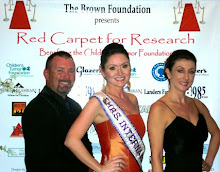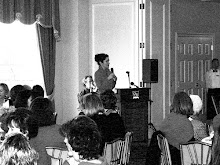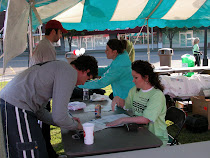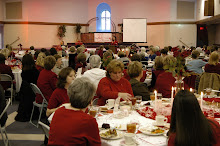Researchers at the Rudd Center at Yale University have reported that one-third of children and teens eat fast food at least once a week. The Rudd Center compiled data over a one year period on 12 of the nation's fast food restaurants.
Teens get 16 percent to 17 percent of their calories from fast food restaurants. Of critical concern is the finding that teens order 800 to 1,000 calories in a single meal with 30 percent of those calories coming from saturated fat or sugar at those fast food restaurants. Those numbers represent about half of the recommended daily calorie intake.
Researchers reviewed 3,039 possible meal combinations designed for children such as the McDonald's Happy Meal and found that only 12 met the nutritional criteria for preschoolers and 15 met the nutritional recommendations for adolescents.
Subway and Burger King were the only restaurants offering those 12 - 15 meal combinations that would meet nutritional recommendations for children and adolescents. Meals included the Veggie DeLite at Subway and mac and cheese at Burger King.
Marketing plays a major role in increased consumption of fast foods. Surveys of parents reveal that 40 percent say their children ask to go to McDonald's a least once a week. A whopping 84 percent of those parents, in turn, had taken their children to a fast food restaurant in the previous week. Despite claims of reducing marketing to children, the Los Angeles Times reported from 2007 to 2009 preschoolers saw:
* 56% more ads for Subway
* 21 % more ads for McDonalds
* 9 % more ads for Burger King
Children ages 6 to 11 see even more ads:
* 56% more for Subway
* 26 % more for McDonalds's
* 10 % more for Burger King
For more information on this remarkable survey, see: http://healthland.time.com/
In Houston we are working to get more nutritional content on menus so people know what their ordering. You can check out our blog at www.houstondines.blogspot.com.
32764-inter-phot
Stay Healthy this Holiday Season
They say that during the holiday season people are more likely to pack on the pounds than during other parts of the year. Treating yourself a little expected, but be careful of overindulgence. The American Heart Association would like to share with you our Nutrition Center.
You can go here for all types of information including healthy recipes, heart smart shopping, and things to consider when dining out. Learn more.
Monday, November 22, 2010
Fast Food Ads Target Children
Posted by Laine Berry at 7:29 AM 0 comments
Monday, November 15, 2010
Healthcare reform, and what it means for you
If you’re like most Americans, you have questions about how the new health reform law, the Affordable Care Act, will affect you and your family. The American Heart Association has produced a series of brief videos with questions from real consumers and responses from experts about how the new law will impact patients with heart disease or stroke. Learn more by visiting: http://www.heartsforhealthcare.org/.
Here are some videos that you may find helpful:
"Will health care reform make coverage more affordable for families like mine? How will it work?"
http://www.youtube.com/watch?v=Dr1-92P-Uxs&feature=player_embedded
“How will healthcare reform address the needs of patients like me, who have lost their jobs and employer insurance?”
http://www.youtube.com/watch?v=4sh-rbM1P3g&feature=player_embedded
"Will the new health reform law make prevention and preventive coverage an integral part of health care and place more emphasis on preventing disease, rather than treating it?”
http://www.youtube.com/watch?v=4sh-rbM1P3g&feature=player_embedded
Posted by Laine Berry at 7:17 PM 0 comments
Tuesday, November 9, 2010
Arkansas Receives National Attention!
Efforts to put AEDs in all Arkansas schools were recently highlighted in the American Heart Association's annual Advocacy Pulse. We are so proud of this accomplishment we want you to tell your lawmakers about it. They deserve recognition for providing these lifesaving tools for all Arkansas students.
Click here to share this news with your lawmakers.
The Advocacy Pulse highlights the great progress that AHA volunteers and staff have accomplished over the past year. Arkansas has made great strides in AED placement and our recent press event is highlighted. Over 11,000 students across Arkansas supported this effort by signing petitions and completing coloring sheets that were delivered to Governor Beebe.
To view the issue of Advocacy Pulse yourself click here and go to page 22: www.heart.org/statelegislativewrapup
We thank all of the students and volunteers that helped raise awareness about the need for AEDs and CPR in schools. With your help we can continue to build healthier lives free of cardiovascular disease and stroke. Thanks!
Barbara Kumpe
Government Relations Director
Heart Disease and Stroke. You're the Cure.
Posted by Laine Berry at 8:33 AM 0 comments
Thursday, November 4, 2010
Breaking News!
BREAKING NEWS - CT Scans Shown to Reduce Lung Cancer Deaths!
The National Cancer Institute released initial results today from the National Lung Screening Trial (NLST), which compared low-dose spiral CT to standard chest X-ray in the early detection of lung cancer. The trial found 20 percent fewer lung cancer deaths among those screened with CT compared to those screened with chest X-ray.
“We welcome this announcement of the results from this landmark trial and the important new scientific information it provides about the roles of CT and X-ray in the screening and early detection of lung cancer,” said Joan Schiller, MD, president of the National Lung Cancer Partnership and chief of hematology/oncology at the University of Texas Southwestern Medical Center. “We now have a path forward and the evidence we need to advise people about screening – especially those at high risk for this disease. This trial is the first to look at these screening methods in a randomized controlled study, which is considered the gold standard of scientific research.”
The study, ongoing since 2002, included more than 53,000 men and women ages 55 – 74 who were at very high risk for lung cancer. Participants had a heavy smoking history, defined as at least one pack of cigarettes per day for 30 years or more.
“This is important new information for people at risk for lung cancer and their health care providers,” said Regina Vidaver, PhD, executive director of the National Lung Cancer Partnership. “Lung cancer is the No. 1 cause of cancer deaths in the U.S. and people are clamoring for guidance on what they can do to find it in its earliest stage when it is more treatable. This data guides our recommendations.”
“Now, more than ever, it’s important for people to talk with their doctors about whether CT screening is right for them,” said Dr. Vidaver. “Each patient deserves an evaluation and recommendation that takes their personal situation into account.”
Additional information from the NCI trial:
* Participants in the trial were randomized to receive either a CT scan or chest X-ray annually for three years.
* 25 percent of the group screened by CT had abnormal findings that required further follow up, such as additional CT scans, lung biopsy and/or thoracic surgery. Further analysis is needed to determine what proportion of those abnormalities were false positive findings.
* An analysis with more detailed results will be prepared for publication in a peer-reviewed journal within the next few months.
“These results give us clear indication how to screen those who are known to be at high risk of the disease. However, the Partnership continues to advocate for research into additional screening methods that will identify other high risk groups without a heavy smoking history,” said Dr. Schiller.
The Partnership also promotes and directly funds needed research into improving our understanding of lung cancer, its basic biology, risk factors, and how to prevent and treat the disease, which kills more people each year than breast, prostate, colon and pancreatic cancers combined.
For more information about the latest in lung cancer research updates, follow us on Twitter or Facebook, or visit our website at www.NationalLungCancerPartnership.org.
Posted by Laine Berry at 2:47 PM 0 comments








































































